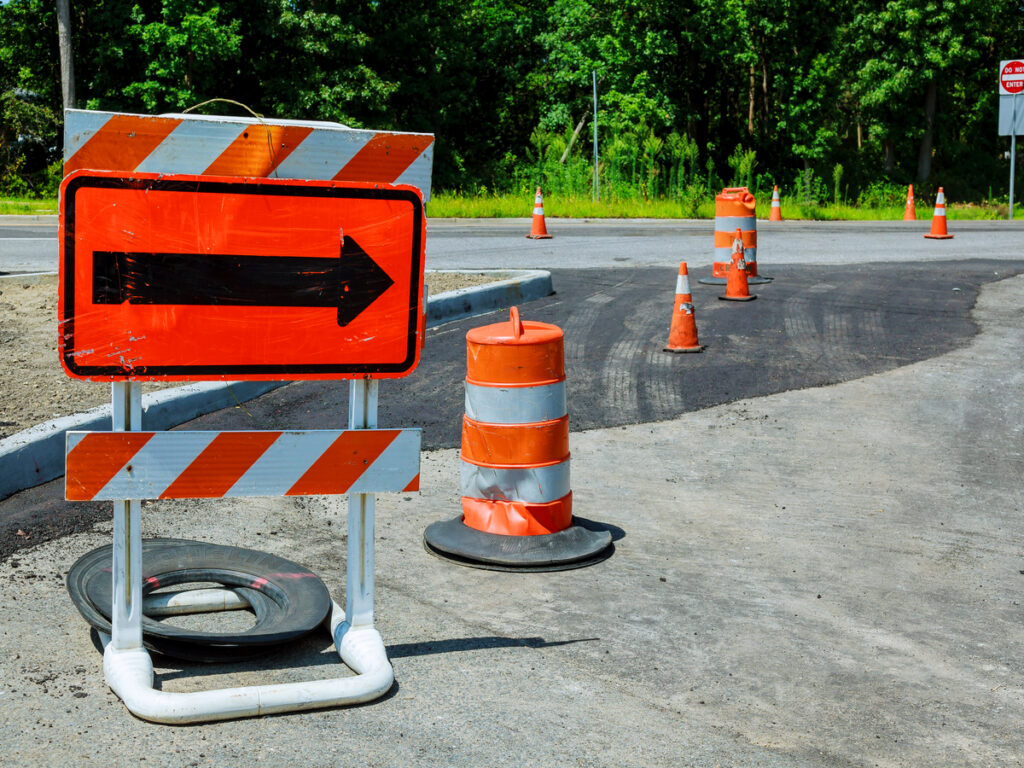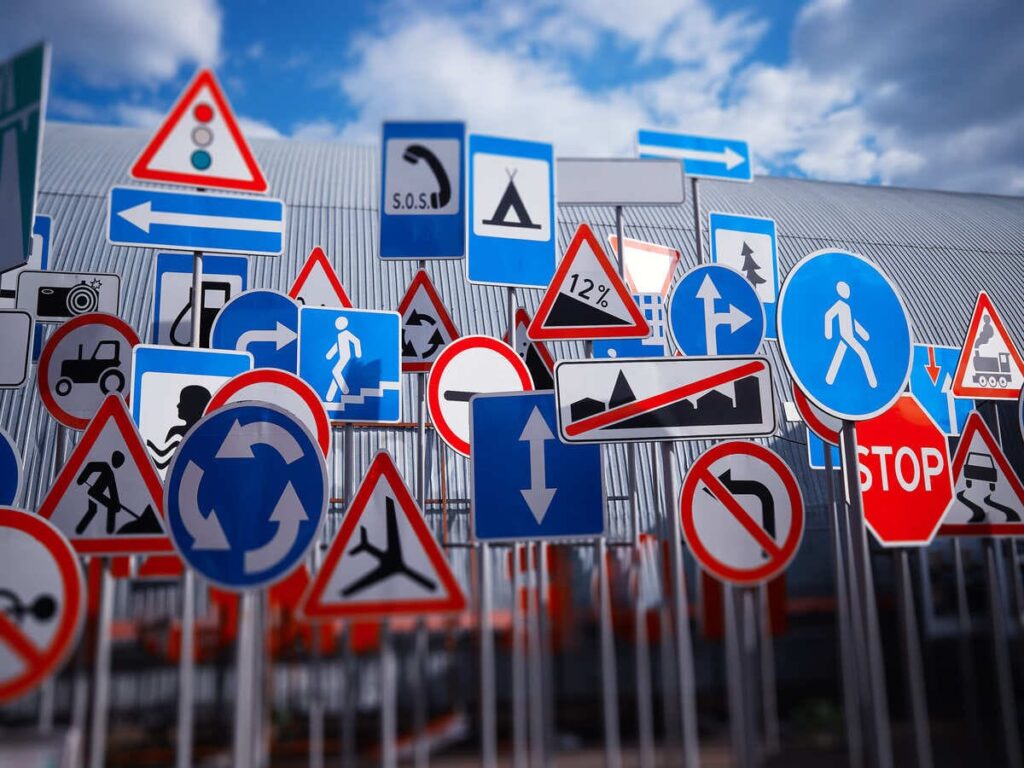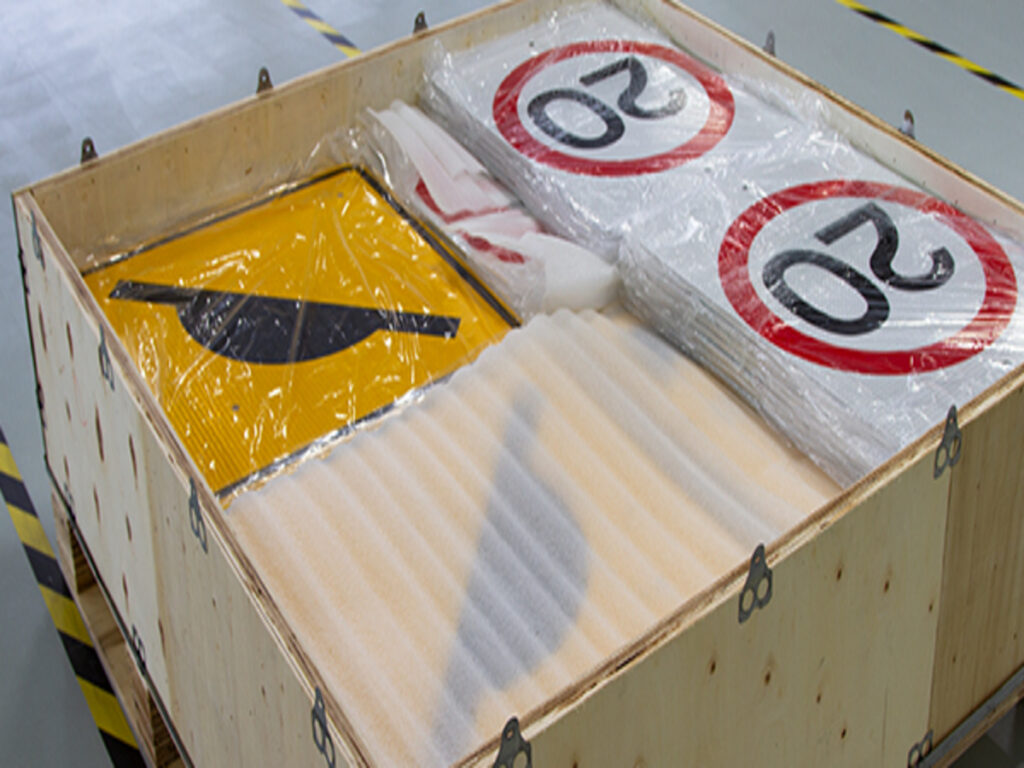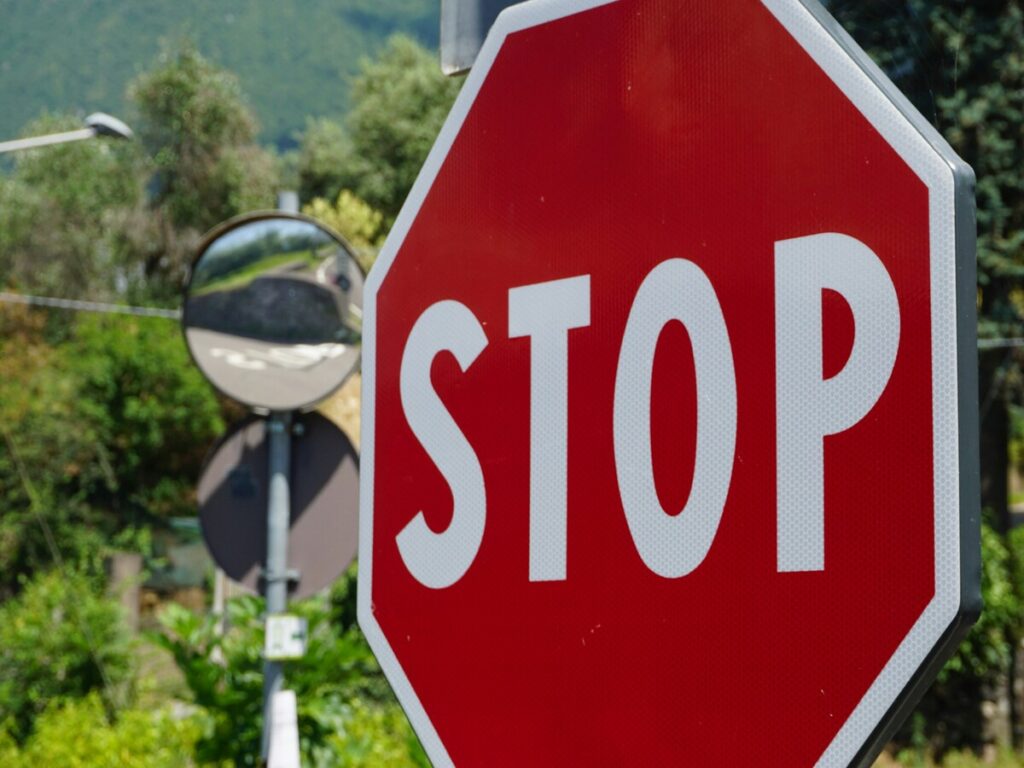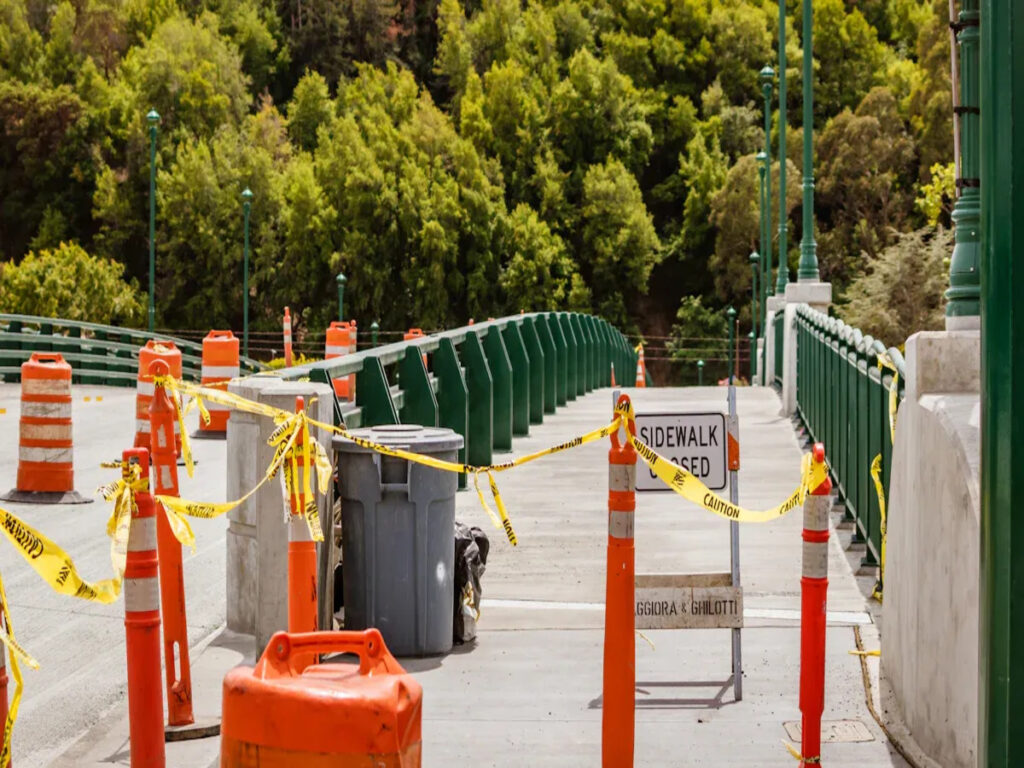
Leading cities now rely on road bollards to transform urban environments and ensure public safety. The global market for road bollards reached USD 4.5 10 억입니다 2022 and continues to grow, fueled by urbanization, smart infrastructure, and evolving security needs. These solutions help manage pedestrian flows and protect critical spaces. Innovative applications emerge as cities adopt IoT-enabled bollards and eco-friendly materials, setting new standards in urban design.
OPTRAFFIC consistently focuses on providing high-quality 교통 볼라드 designed to meet the growing demands of urban safety and infrastructure. With an emphasis on durability, effective traffic control, 및 친환경 재료, OPTRAFFIC ensures that cities can enhance safety and improve the functionality of public spaces.
주요 테이크 아웃
- Road bollards improve urban safety by controlling traffic, 보행자 보호, and preventing unauthorized vehicle access.
- Smart bollards with sensors and IoT technology help cities manage traffic flow and respond quickly to changing conditions.
- Cities like Copenhagen, 싱가포르, and Melbourne use bollards to support sustainability, 기술, and community identity.
- Strict regulations and regular inspections ensure bollards meet safety, accessibility, and emergency access standards.
- Future bollards will be multifunctional, energy-efficient, and integrated with smart city systems to enhance safety and urban design.
Road Bollards in Urban Safety
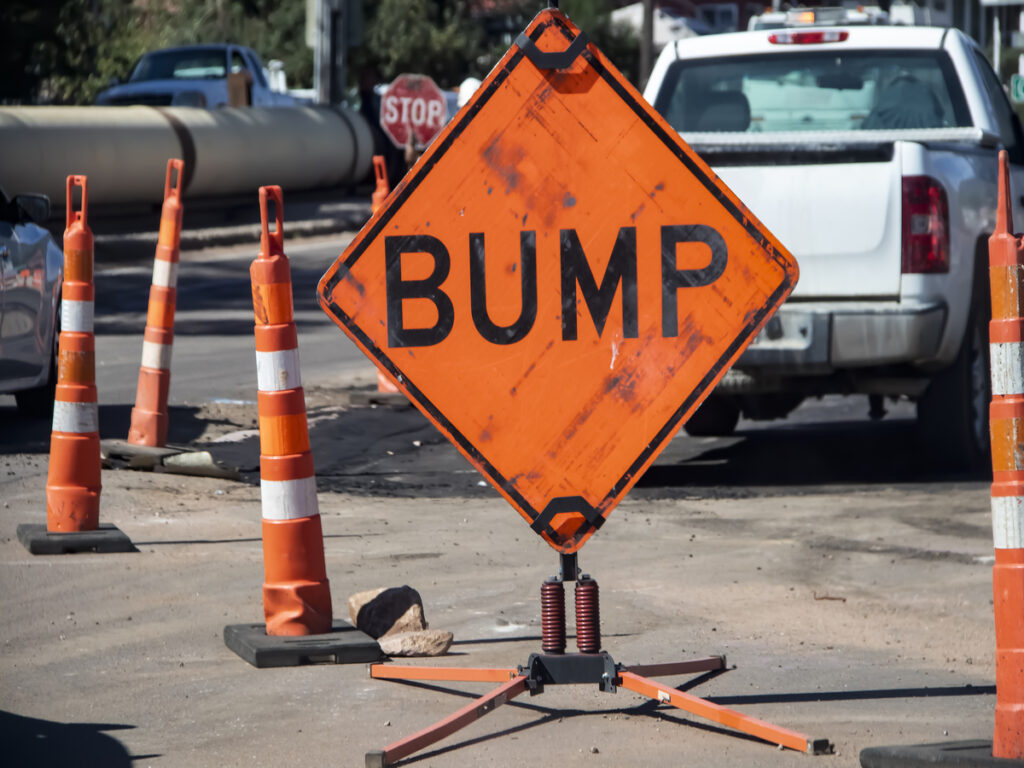
Essential Role in Cities
Road bollards play a vital role in protecting people and property in busy cities. They act as physical barriers that prevent unauthorized vehicles from entering pedestrian zones and public spaces. Many cities use road bollards to reduce vehicle speeds, especially in areas with high foot traffic. 더 낮은 속도, often below 35 km/hr, help decrease the risk of serious accidents. Road bollards also support traffic calming strategies, which improve driver attentiveness and encourage safer behavior near schools, 공원, and shopping centers. These barriers help create safer environments for everyone.
- Bollards prevent unauthorized vehicle access and protect pedestrians.
- They reduce vehicle-pedestrian accidents and deter vehicle-based crimes.
- Road bollards regulate traffic flow and support safer pedestrian zones.
Modern Applications
Cities now use advanced road bollards to address new challenges in urban safety. Smart bollards equipped with sensors and connectivity allow real-time monitoring of traffic conditions. These systems can adjust automatically to changing needs, such as allowing emergency vehicles through during peak hours. Innovations like retractable, lighted, and impact-absorbing bollards make them more effective in busy urban settings. 바르셀로나에서, smart access control systems use automatic road blockers to reduce congestion and improve pedestrian safety. These modern applications help cities manage traffic flow and enhance security.
| 통계량 / 데이터 포인트 | 설명 |
|---|---|
| 우리를. Market Demand for Automatic Barriers | Projected to reach $6 10 억으로 2025, driven by protective legislation and security needs. |
| Smart Traffic Management Systems Growth | Expected annual growth rate over 12% ~에 의해 2025, improving urban mobility and safety. |
| Urbanization Trend | 에 의해 2050, 68% of the global population will live in urban areas, increasing demand for safety and mobility infrastructure. |
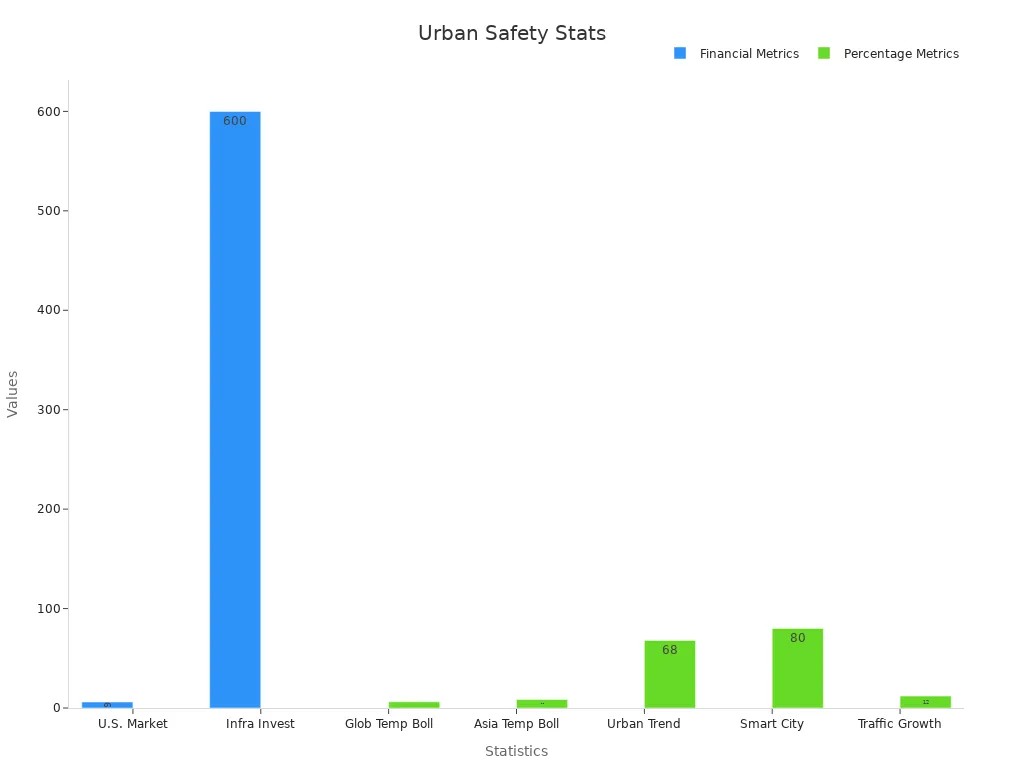
글로벌 트렌드
The use of road bollards continues to grow worldwide. The global traffic retractable bollard market has expanded steadily, with millions of units installed each year. Electromechanical retractable road blockers now dominate because they save energy and work well with smart city systems. North America and Europe lead in market share due to strong infrastructure and strict regulations. Asia-Pacific is the fastest-growing region, driven by rapid urbanization and new infrastructure projects. Automated barriers and road blockers are now common in commercial, 산업, 및 주거 지역. These trends show that cities rely on road bollards and road blockers to improve traffic control, manage traffic flow, 사람들을 안전하게 지키십시오.
코펜하겐: Sustainable Applications
Mobility and Green Design
Copenhagen stands as a global leader in sustainable urban design. The city integrates road bollards into its green infrastructure to support safe and efficient mobility. Planners use bollards to separate bike lanes from vehicle traffic. This approach protects cyclists and encourages more people to choose bicycles for daily travel. Road bollards also help define pedestrian zones and limit vehicular access in parks and public squares. These measures reduce emissions and promote healthier lifestyles. The city places bollards made from recycled materials to align with its environmental goals. Many of these installations blend with landscaping, creating a seamless look that supports both safety and aesthetics.
팁: Copenhagen’s use of road bollards in green spaces helps maintain clear routes for both cyclists and pedestrians.
안전 규정
Copenhagen enforces strict safety regulations for the placement and design of bollards. The city requires that all road bollards meet standards for visibility and impact resistance. Regulations specify minimum distances between bollards to ensure emergency vehicles can access restricted areas when needed. Safety regulations also address the height and spacing of bollards to prevent accidents involving cyclists or pedestrians. The city reviews each installation to confirm compliance with these rules. These steps ensure that bollards protect people without blocking necessary access.
| Regulation Focus | 설명 |
|---|---|
| 시계 | High-contrast colors and reflective surfaces |
| 간격 | Allows emergency and service vehicle access |
| 충격 저항 | Withstands accidental or intentional impacts |
도시 프로젝트
Copenhagen’s urban projects showcase innovative use of bollards in high-traffic areas. 예를 들어, the Nørreport Station area uses road bollards to manage access and protect thousands of daily commuters. Planners installed bollards to separate pedestrian walkways from busy bus lanes. These bollards prevent unauthorized vehicular access while allowing emergency vehicles to enter when needed. The city also uses retractable bollards in shopping districts to control access during peak hours. These projects demonstrate how Copenhagen combines safety, 유동성, and sustainability through thoughtful bollard design.
싱가포르: Smart City Solutions
Technology Integration
Singapore leads the way in smart city construction by using advanced road bollards and intelligent transportation systems. The city’s urban traffic management relies on real-time data and sensor-based technologies. Smart bollards equipped with IoT devices and AI help monitor traffic flow and adjust access in busy areas. These technological advancements allow for quick responses to changing traffic conditions. 예를 들어, some bollards can retract automatically to let emergency vehicles pass or to manage traffic during special events. The integration with smart cities ensures that road bollards work seamlessly with other advanced traffic management equipment, 안전 및 효율성 향상.
메모: Singapore’s focus on technological advancements in traffic control supports its vision for a connected and safe city.
재료와 디자인
Singapore’s approach to bollard design emphasizes both durability and sustainability. Manufacturers now use eco-friendly materials such as recycled steel and composite materials. These choices reduce the environmental impact of road bollards while maintaining strength and service life. Environmental protection guidelines and regulations encourage the use of sustainable production practices. This trend aligns with Singapore’s broader smart city initiatives and urban development goals. The city also values design aesthetics, ensuring that bollards blend with modern streetscapes and green spaces. Many installations feature sleek finishes and colors that match the surrounding environment.
Urban Traffic Management
Urban traffic management in Singapore benefits from the strategic placement of bollards in high-traffic zones. The city uses road bollards to guide pedestrian movement and protect public spaces from unauthorized vehicles. In the Marina Bay area, planners installed smart bollards that adjust automatically based on real-time traffic data. These bollards help regulate traffic flow and enhance safety for both pedestrians and drivers. The use of advanced technologies and sustainable materials demonstrates Singapore’s commitment to innovation and environmental responsibility. 결과적으로, the city sets a benchmark for other regions aiming to improve urban mobility and safety through technological advancements.
멜버른: Art and Safety

Public Art Integration
Melbourne stands out for blending road bollards with public art. The city transforms ordinary bollards into creative features that reflect local culture. Artists paint and decorate bollards to celebrate community events, sports, and history. These colorful installations make streets more inviting and help people feel connected to their neighborhoods. Road bollards in Melbourne do more than provide safety; they also serve as landmarks and conversation starters. This approach encourages respect for public spaces and supports a vibrant city atmosphere.
팁: Artistic bollards can boost community pride and make urban areas more attractive for residents and visitors.
High-Density Regulations
Melbourne enforces strict regulations for bollard use in busy urban areas. City planners use structured compliance checklists to ensure every installation meets safety standards. Teams conduct regular visual inspections to check for damage or obstructions. Documentation reviews confirm that all permits and certifications are up to date. Performance evaluations help measure how well bollards control traffic and protect pedestrians. Training programs keep workers informed about the latest standards. Planners use audits and mapping tools to avoid overcrowding pathways with too many bollards. They follow spacing rules, keeping at least 3 feet between bollards to allow wheelchair access and not more than 5 feet to block unauthorized vehicles. Reflective markings improve visibility at night and during bad weather. Professional installers use laser guides to keep bollards aligned and safe for everyone.
- 정기 검사 및 감사
- Proper spacing for accessibility
- Reflective markings for safety
고유 한 응용 프로그램
Melbourne’s innovative use of road bollards appears in many high-traffic locations. In Federation Square, planners installed artist-designed bollards to guide foot traffic and protect public gatherings. These bollards allow emergency vehicles to access the area when needed. In laneways, decorative bollards help define pedestrian zones and prevent vehicle entry. The city uses both permanent and temporary bollards, ensuring each type meets the same safety standards. Melbourne’s approach shows how creative design and strict regulations can work together to improve safety and access while adding character to the city.
Security and Anti-Terrorism
Anti-Ram Solutions
Cities around the world face growing threats from vehicle-based attacks. Recent incidents in Nice, Berlin, 맨해튼, and Waukesha show the devastating impact of such events. These attacks highlight the urgent need for anti-terrorism measures in urban planning. Road bollards and road blockers with anti-terrorism features now protect crowded spaces, transit hubs, and public squares. Security bollards use crash-rated designs that meet international standards like ASTM F2656 and PAS 68. These standards require bollards and road blockers to withstand impacts at speeds up to 50 MPH. 런던, 뉴욕, and Singapore have installed road blockers at key locations to prevent unauthorized vehicle access and protect pedestrians. These anti-terrorism features help cities create safer environments and support perimeter security.
Automated Barriers
Automated road blockers play a vital role in urban security. Cities use advanced access control systems that combine ANPR, RFID, and biometric verification. These systems allow only authorized vehicles to enter restricted zones. Automated road blockers reduce human error and speed up vehicle checks. Emergency manual overrides ensure quick response during crises or special events. Many cities now use road blockers with enhanced security features, such as integrated CCTV and cloud-based monitoring. These systems improve traffic flow and provide scalable solutions for high-traffic areas. The adoption of automated road blockers continues to grow as cities invest in smart infrastructure and anti-terrorism features.
- ANPR and RFID technologies enable fast, contactless vehicle identification.
- Automated road blockers support multi-layered access control systems.
- Enhanced security features improve both safety and user convenience.
규제 표준
Strict regulations guide the installation and use of road bollards and road blockers. International standards, 포함 ISO, ASTM, 그리고 pas 68, set requirements for crash-rated performance and impact resistance. Cities must follow these regulations to ensure that road blockers provide effective anti-terrorism protection. Local authorities inspect and approve installations to confirm compliance. These regulations help cities maintain high safety standards and adapt to evolving security threats. By following global guidelines, cities can deploy road bollards and road blockers that deliver reliable protection and enhanced security features.
Comparing Regulations in Cities
Placement Standards
Cities around the world set clear placement standards for road bollards and road blockers. These standards help keep people safe and make sure emergency vehicles can reach important areas. Planners often use tables and checklists to decide where to put each barrier. 예를 들어, New York City places road blockers at intersections and near public buildings to control vehicular access and protect pedestrians. 싱가포르에서, planners use mapping tools to avoid blocking sidewalks or bike lanes. Copenhagen uses similar methods, making sure bollards do not interfere with green spaces or historic sites.
| 도시 | Minimum Spacing | 비상 접근 | Historic Area Considerations |
|---|---|---|---|
| 뉴욕 | 3 피트 | Collapsible bollards for fire trucks | 예 |
| 싱가포르 | 3-5 피트 | Removable road blockers | 예 |
| 코펜하겐 | 3 피트 | 개폐식 볼라드 | 예 |
Placement standards also address visibility. Many cities require high-contrast colors or reflective surfaces on road bollards. This helps drivers and pedestrians see them at night or in bad weather. Planners often choose locations that balance safety, 보안, and the look of the city.
메모: Placement standards must allow for both safety and emergency access, especially in crowded urban areas.
Safety and Accessibility
Safety regulations guide how cities use bollards and road blockers to protect people. These rules focus on keeping everyone safe, including those who use wheelchairs or have limited mobility. ADA compliance in the United States requires at least 3 볼라드 사이의 빈 공간 피트. This allows wheelchair users to pass through while still blocking unauthorized vehicles. In Europe and Asia, similar rules exist to balance security and accessibility.
- Bollards must not block fire apparatus or emergency responders.
- Collapsible and removable road blockers help emergency teams reach people faster.
- Performance-based design brings together engineers, 건축가, and city officials to find the best solutions.
Many cities use performance-based design principles. This means they look at how well the bollards work in real situations, not just on paper. 예를 들어, collapsible road blockers in London and New York have reduced emergency response times. These cities also use cost-effectiveness studies to show that bollards provide strong safety management at a lower cost than other barriers.
Bollards also support sustainable design. Planners choose materials and locations that minimize harm to the environment. 때때로, security needs can conflict with accessibility or environmental goals. Stakeholders work together to solve these problems and keep the city safe for everyone.
Compliance Processes
Cities follow strict compliance processes before installing road bollards or road blockers. These steps ensure that every barrier meets safety regulations and works as planned. The process usually includes:
- 사이트 평가: Planners check the area for traffic flow, 비상 경로, and pedestrian needs.
- Design Review: Engineers and architects review the plans to make sure they meet local and international standards.
- Approval and Permits: City officials issue permits only if the design follows all safety regulations.
- 점검: 설치 후, inspectors check the road blockers for proper spacing, 시계, 그리고 비상 접근.
- 지속적인 감사: Cities conduct regular audits to make sure bollards remain in good condition and do not block access.
International guidelines, such as ISO and ASTM, influence these processes. Cities often update their rules to match new standards or address emerging issues, like fire apparatus access road codes. Aesthetic considerations also play a role. Planners want bollards to fit with the city’s look and historic sites.
팁: Regular inspections and audits help cities maintain high safety standards and adapt to new challenges.
Future Applications and Trends
스마트 볼라드
Cities now look to smart bollards as a key part of future urban traffic management. These advanced bollards use IoT and sensor integration to collect real-time data on traffic patterns and environmental conditions. Many smart bollards feature facial recognition and vehicle detection systems. These systems help identify potential threats and unauthorized vehicles, 도시 지역을 더 안전하게 만듭니다. Some bollards can even communicate with autonomous vehicles, guiding them safely through busy streets. Cities like Milan, 런던, and New York have already started using these technologies to improve traffic control and public safety. Energy-efficient features, such as solar power and energy harvesting, support sustainability and reduce energy use. Customizable designs and interactive elements also help bollards fit into smart city initiatives and enhance public spaces.
메모: Smart bollards support both safety and the goals of smart city construction by adapting to changing urban needs.
예측 유지 보수
Technological advancements now allow cities to use predictive maintenance for road bollards. IoT sensors monitor each bollard in real time, predicting failures before they happen. This approach reduces unexpected breakdowns and extends the lifespan of bollards. 유연한 드리어 이언트, which absorb impacts and return to their original position, also lower maintenance needs. 정기 검사, hydraulic system checks, and operational testing help keep bollards reliable. These steps ensure that urban traffic management systems remain safe and efficient.
| 유지 보수 작업 | 빈도 |
|---|---|
| Structural inspections | 정기적으로 |
| Hydraulic system checks | Every three months |
| Operational testing | 연 2회 |
| Annual servicing | 일년에 한 번 |
Sustainable Design
Sustainable design now shapes the future of road bollards. Many cities choose eco-friendly materials, such as recycled steel and composites, 환경 영향을 줄이기 위해. Energy-efficient technologies, like solar-powered lighting, help lower energy consumption. These choices support both environmental goals and long-term cost savings. Planners also focus on designs that blend with the city’s look, making bollards both functional and attractive.
Multifunctional Solutions
Modern bollards now offer multifunctional solutions for urban traffic management. Many integrate access control systems, such as RFID readers and license plate recognition, to manage vehicle entry. Automated operation allows for smooth traffic flow and minimal delays. Robust construction and weatherproof sealing ensure durability in all conditions. Some bollards retract flush with the ground, preserving the appearance of public spaces. These features make bollards a flexible tool for cities aiming to balance safety, 미학, 그리고 효율성.
Key Takeaways for Cities
Innovation and Safety
Leading cities have shown that innovation in road bollards can greatly improve urban safety. Modern bollards now include features such as built-in lighting, decorative covers, and smart technology. These additions help guide pedestrians, 가시성 향상, and support citywide connectivity. Many cities use road bollards for traffic control, perimeter security, and to protect high-risk areas. By choosing the right type of bollard for each location, planners can balance safety, 미학, and function.
Smart bollards with integrated sensors and lighting not only protect people but also make public spaces more welcoming.
모범 사례
Urban planners should follow best practices to ensure effective bollard installation and maintenance:
- Prepare the ground properly and install bollards at the correct depth for impact resistance.
- Space bollards to allow pedestrian access while blocking unauthorized vehicles.
- Use materials like steel for strength or stainless steel for a modern look.
- Inspect bollards regularly for damage or corrosion and replace them as needed.
- Follow local regulations, including ADA standards, to ensure accessibility.
Flexible and retractable bollards offer solutions for areas that need both security and easy access. Decorative covers can improve the appearance of public spaces while still providing protection.
Adapting Solutions
Every city has unique needs. Planners must consider the purpose, 위치, and budget when selecting road bollards. Some areas benefit from flexible bollards that bend after impact, while others require strong, fixed barriers. Decorative options can match the city’s character and support community pride. Real-world use cases show that bollards work well in pedestrian-only zones, mixed-use spaces, and high-security locations.
Expert Guidance
Experts recommend that cities tailor their bollard strategies to local conditions. They suggest regular inspections, proper installation, and ongoing maintenance. By understanding the pros and cons of each type, planners can choose bollards that meet both safety and design goals. Consulting with industry professionals ensures that every installation supports long-term urban safety and mobility.
Cities worldwide continue to advance urban safety by using innovative bollards and strong regulations. Road bollards help lower vehicle speeds and improve driver behavior. 예를 들어, cars slowed by up to 11.4 mph and trucks by 11.7 mph near these safety devices. The table below shows how bollards reduced unsafe driving actions at different times of day:
| Time of Day | Reduction in Erratic Maneuvers (EM) | 통계적 중요성 |
|---|---|---|
| Daytime | 약 60% 절감 | Confirmed by Wilcoxon’s test (p = 0.05) |
| 야간 | 약 65% 절감 | Confirmed by Wilcoxon’s test (p = 0.05) |
Planners should apply global best practices and consult experts to ensure bollards support both safety and mobility in every city.
FAQ
What are the main benefits of using smart bollards in cities?
Smart bollards help cities manage traffic, 안전을 향상시킵니다, and collect real-time data. These devices can adjust automatically to changing conditions. They also support emergency access and enhance urban mobility.
How do cities ensure bollard installations 안전 표준을 충족하십시오?
Cities follow strict guidelines and conduct regular inspections. Planners check spacing, 시계, 그리고 비상 접근. They use international standards like ISO and ASTM to confirm compliance.
Can bollards be both functional and decorative?
예. Many cities use bollards that combine safety with public art or attractive designs. These installations enhance the look of streets while protecting pedestrians and guiding traffic.
What materials do sustainable bollards use?
Sustainable bollards often use recycled steel, 복합 재료, or eco-friendly plastics. These choices reduce environmental impact and support long-term city goals.
팁: Choosing sustainable materials helps cities meet green infrastructure targets and lower maintenance costs.

